Daily ridership 240,000 (daily) Operator(s) SITEUR Locale Guadalajara Number of stations 29 | Website SITEUR System length 24.0 km (14.9 mi) Number of lines 2 | |
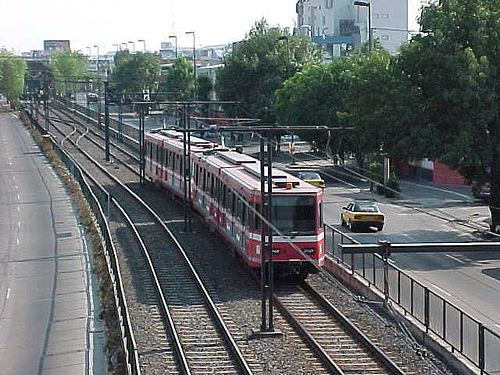 | ||
Transit type Light rail rapid transit Began operation 1989 (Line 1)
1994 (Line 2) | ||
The Guadalajara light rail system (Spanish: Tren ligero de Guadalajara), which is operated by SITEUR (Sistema de Tren Eléctrico Urbano, Spanish for Urban Electrical Train System), is a light rail system serving the municipalities of Guadalajara, Zapopan and Tlaquepaque, in the state of Jalisco, Mexico. It is owned by the state of Jalisco, and operator SITEUR is a state authority. Opened in 1989, the system currently has two lines: Line 1, running from north to south, with 19 stations, and Line 2, running from downtown to the east, with 10 stations.
Contents
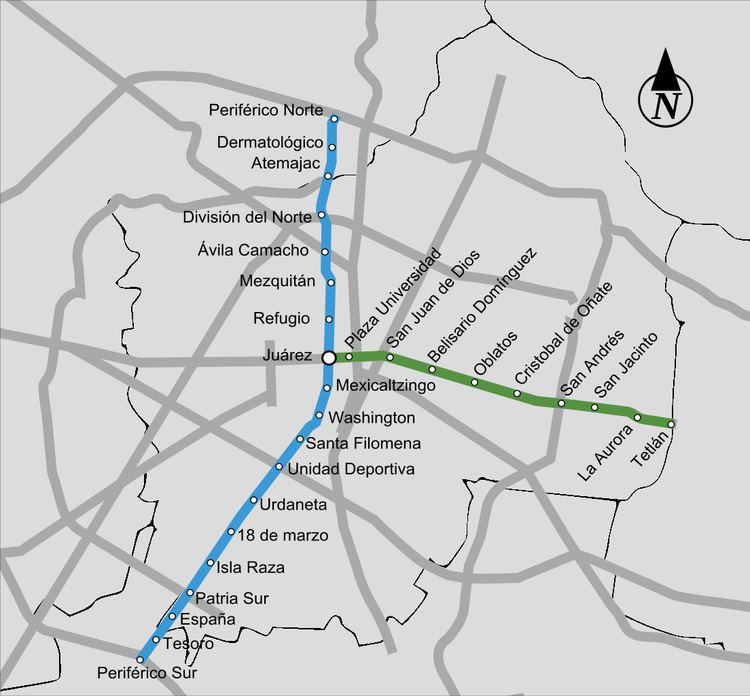
History
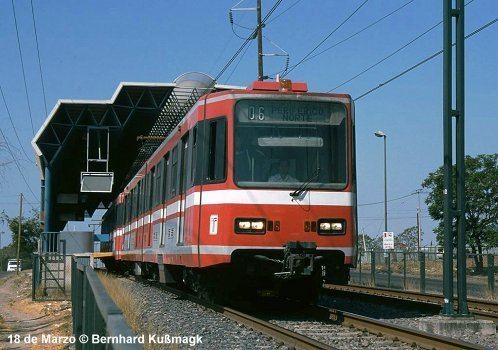
The history of urban trains in Guadalajara dates back to the 19th century, with the first trams pulled by mules, going from the Cathedral to the Templo de la Merced.
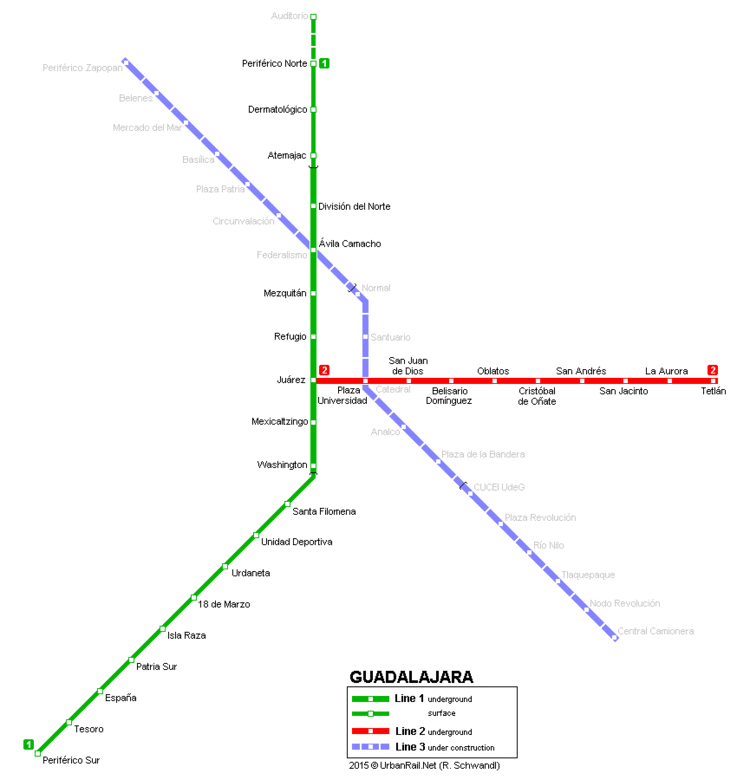
In 1974, several houses and streets in the city center were demolished to make way for a wide new roadway, named Avenida Federalismo (Federal Avenue), and the construction of a new public-transport tunnel underneath. Avenida Federalismo (also known as Calzada del Federalismo) replaced what had been Moro St. (but with a much wider right-of-way) and is one of Guadalajara's most major thoroughfares. The 6.6-kilometre (4.1 mi) tunnel underneath the avenue was designed for future use by a rail system, but due to a lack of funding at the time it was initially served by a new trolleybus system, which opened on December 15, 1976. Several years later, work began to convert the trolleybus tunnel and stations for use by a light rail line. The tunnel closed for trolleybuses in early 1988, but trolleybus service continued on other routes and is still in operation. The first light rail line, Line 1, opened on September 1, 1989.
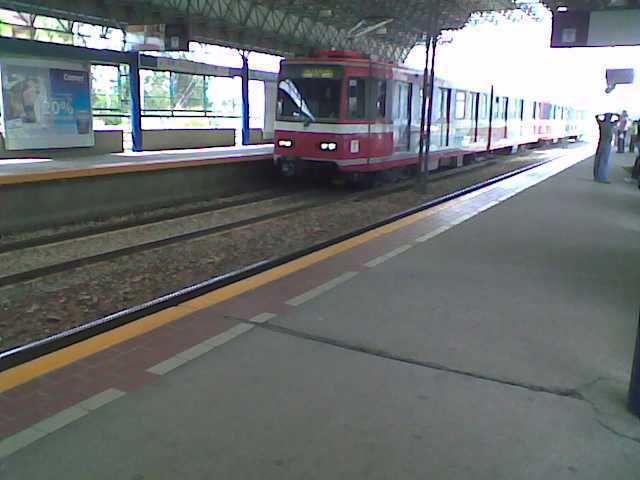
A few years later, Line 2 was constructed, and it opened on July 1, 1994. Because of the continuing heavy traffic congestion on the city's streets and the large numbers of users of the rail system, there are plans to extend Line 2 to the west and to build a third line.
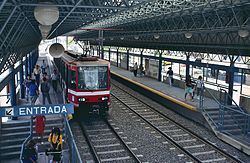
Line 1 is underground in the city center, but runs "at grade" north and south of the city center, and its surface sections include several level crossings, protected by crossing gates. The station platforms accommodate trains no longer than two cars. Line 2 is entirely underground except for a non-passenger section at its east end, connecting the last station to the maintenance facility. Its stations are long enough to accommodate trains of up to four cars.
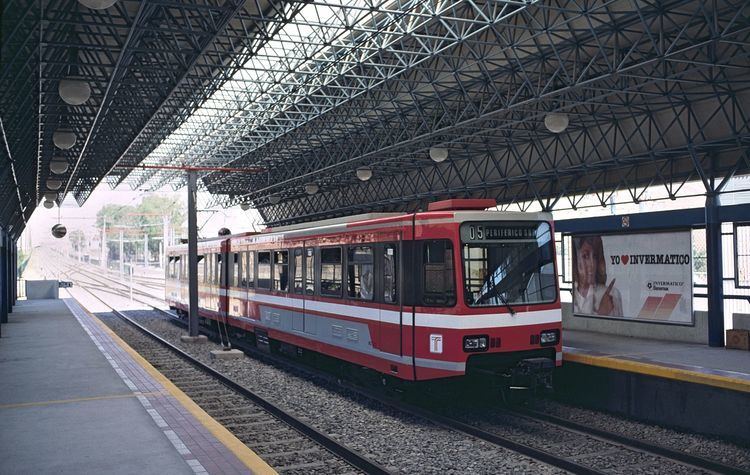
The German company Siemens supplied the system engineering, signaling and telecommunication, power supply, and some components of the vehicles.
Line 1
Line 1 runs from north (North Beltway) to south (South Beltway). It is 15.5 km (9.6 mi) long. Line 1 stations are:
Line 2
Line 2 runs from downtown (Juárez) to east (Tetlán), and is 8.8 km (5.5 mi) long. Its stations are:
Fleet
The fleets consists of 48 articulated light rail vehicles, each bi-directional ("double-ended") and powered from overhead lines. They have a top speed of 70 km/h (43 mph). All are the same general type and all were built in Mexico. The first 16 cars were built by Concarril, and using propulsion equipment from Melmex (Mitsubishi Electric of Mexico). For line 2, another 32 cars were ordered, and these came from Bombardier, which had acquired Concarril in 1992 and built this new batch in the same factory (in Ciudad Sahagún) as the earlier batch; they have propulsion equipment from Siemens. The first batch were model TLG88, and the second were model TEG90.
Expansion
Construction of the new Line 3 began at the end of 2014. The 21.4-kilometre (13.3 mi) line will feature a combination of underground (5.3 km) and elevated running (16.1 km) and include 18 stations. Line 3 will cross the full length of the city, from Zapopan in the north-west to Tlaquepaque and Tonalá, in the south-east, via the city centre.
